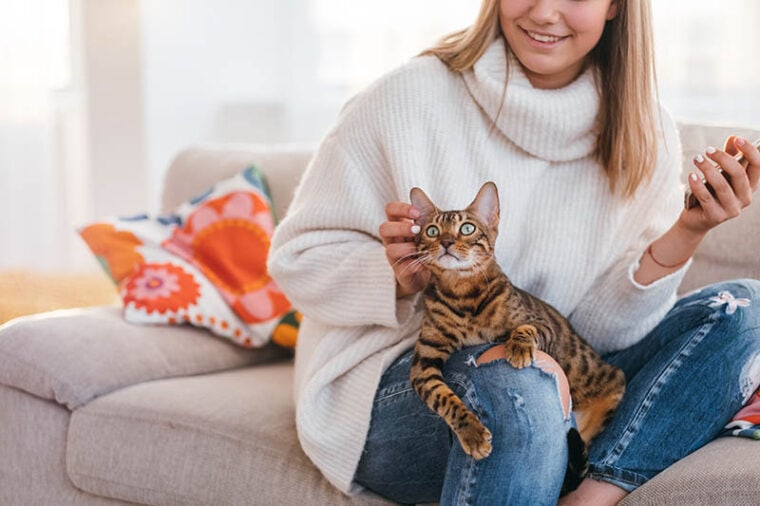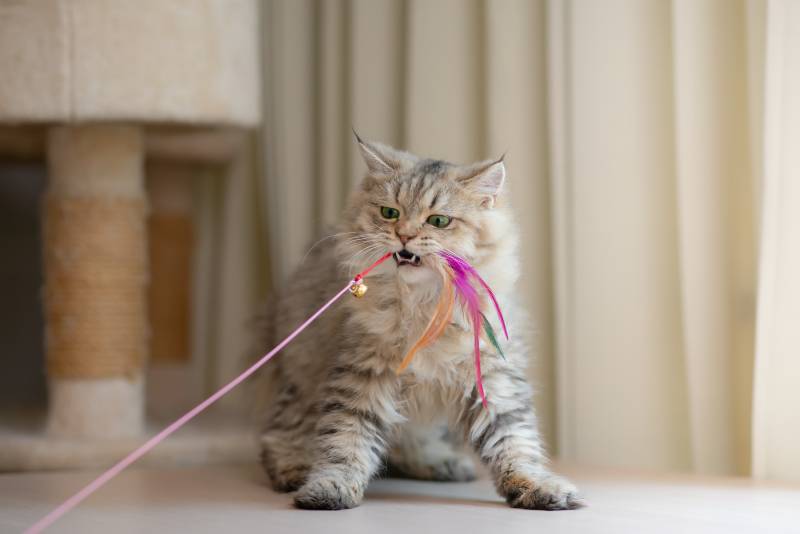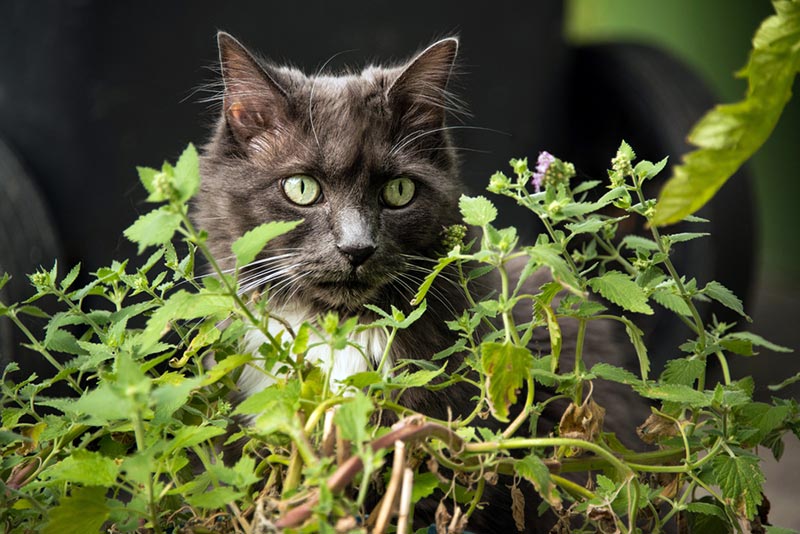
Cats are one of the most popular types of pets in the US, and they make wonderful companions for many individuals and families. While many can act very independently, they all still have specific needs that must be met for them to live happy and healthy lives.
Since cats can’t verbally tell us what they want, cat owners need to get to know their behavior and their needs. This guide will help new cat owners prepare their homes to become cat-friendly and ensure they have everything their cat needs.1
The 10-Step Guide to Making Your Home Cat-Friendly
1. Create Vertical Spaces
Most cat breeds prefer to observe their environments from a high vantage point. They will also enjoy climbing, so it’s important to incorporate plenty of higher spaces for them to climb up to and rest.
You don’t necessarily have to install a bulky cat tree to create vertical spaces. You can find plenty of DIY plans or purchase shelves specifically designed to allow cats to climb. Expanding vertical spaces in your home will help your cat feel safe and encourage them to exercise.

2. Make Plenty of Hiding Spaces
Cats love small, cozy spaces that help them feel safe and secure. They’ll appreciate secluded spots where they can consistently rest undisturbed. You can certainly buy fancy cat dome beds, but many cats are also content with DIY cat domes, shoeboxes, and other cardboard boxes with entrance holes cut into them.
Place these hiding spaces all throughout the house at varying heights. Your cat will love the variety of options and will feel calmer knowing that it has a plethora of places to hide.
3. Use Enrichment Toys
Cats need plenty of playtime and fun toys that engage their instincts. Having a set of high-quality toys can help alleviate boredom and prevent cats from engaging in destructive and unwanted behaviors.
Many cats will enjoy batting around treat dispensing toys, while others may take to solving treat puzzles. If your cat likes catnip or silvervine, you can sprinkle them onto some toys and hide them around the house for your cat to hunt down.

4. Have Enough Litter Boxes
Most cats naturally take to a litter box and require very little training. However, litter box issues can easily cause them to stop using them. So, it’s important to ensure that you have enough litter boxes in the house. As a general rule of thumb, you’ll need one litter box per cat plus one extra. So, if you have two cats, you should have at least three litter boxes in your home.
Using the right kind of cat litter is also important because some cats can be finicky about the texture of their litter. You’ll also want to make sure that there’s always enough clean litter in the litterbox for your cat to use.
Lastly, make sure that the litter boxes are located in a place that’s quiet and secluded. They should be in areas that don’t have a lot of foot traffic and make cats feel safe while they use them. They should also be away from food and water bowls.
5. Disperse Feeding Areas
In the wild, cats must hunt for their food and look for drinking water. So despite the trend for double bowls most cats would prefer to be fed from a bowl that is separate from their water bowl and that they don’t need to share with cat companions. Food and water bowls should be placed in different quiet areas rather than together.
Cats by nature will eat multiple small meals per day rather than one large meal. This replicates their habit of hunting small rodents, around 10 each day. Offer food little and often or use a food dispenser if your cat tends to scoff the lot as soon as the food is put out.
6. Set Up Scratching Posts
Cats have an instinctive need to scratch. They can scratch to mark territory around the home, express pent-up emotions or just to maintain their claws. If you don’t have scratching surfaces in your home, your cat will eventually turn to your furniture, doorposts, and other parts of your home.
Different cats will have their own preferences for the texture of scratching surfaces. Many cats like sisal, while others might enjoy cardboard. Most cats prefer tall, sturdy objects to dig their claws into and secure a good grip. However, some may prefer a flat horizontal surface. So, try placing different kinds of scratching areas throughout your home. You can also rub catnip on the surfaces to encourage your cat to use them.
7. Place Observation Points Near Windows
Many cats will enjoy being able to watch the outside world from a safe distance. You can place cat trees or window perches near windows to provide opportunities for your cat to look outside. If you’re able, hanging a bird feeder close to the window can attract birds to entertain your cat.
Some people have also installed catios, which are small, caged outdoor spaces that cats can use to spend time observing or sunbathing.
8. Routine
Cats enjoy a routine to the flow of the household and it is important to offer predictable positive human interactions each day. They will get excited when it is time for food, to play, or to snuggle up in front of the TV with you.
9. Be Mindful of Scents
Cats have very sensitive noses, and cat owners need to be very mindful of them. Certain fragrances or air fresheners can be too strong or irritating to cats. Common scents that most cats dislike are lemon and citrus, rosemary, mint, and lavender.
You’ll also want to stick to a litter box cleaning schedule because cat urine odors are particularly strong. Cats won’t use a full litter box and can start relieving themselves outside of litter boxes if they’re too dirty.
Most cats enjoy the smell of catnip and silver wine. The dried form of these plants doesn’t have a strong scent to humans, so they’re great to sprinkle on toys and hide throughout the house for your cat to enjoy.

10. Hide Potentially Dangerous Household Items
A cat’s curiosity can unintentionally get it into some trouble. Common household items can be harmful if ingested, so it’s important to hide all these items in a safe, unreachable location. You can hide them in cabinets or boxes with a tightly fitted lid or a lock.
Some common household items that need to be hidden are the following:
Make sure to keep your kitchen counter and dining table clear of food. Check to ensure that your cabinet doors are heavy or difficult for cats to open. If you feel that your cat would be able to get to them easily, you can install a child-proof lock.
Conclusion
When bringing home a new cat, you’ll have to make a few modifications to your home to ensure it’s cat-friendly. Fortunately, there are plenty of inconspicuous ways to make accommodations so that your home doesn’t look and feel too different.
It may take several weeks for a new cat to become comfortable in a new home and making the right adjustments can help the transition be as smooth as possible. If you notice that your cat is still afraid or anxious after some time, you can enlist the help of a reputable cat behaviorist to help you create a safe and secure environment for your cat.
Related Reads:
Featured Image Credit: golubovystock, Shutterstock







